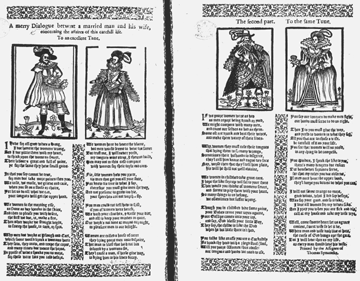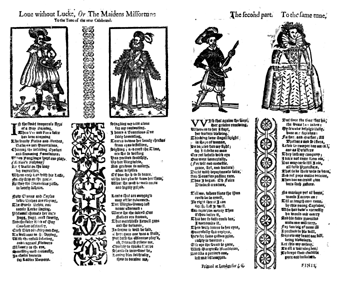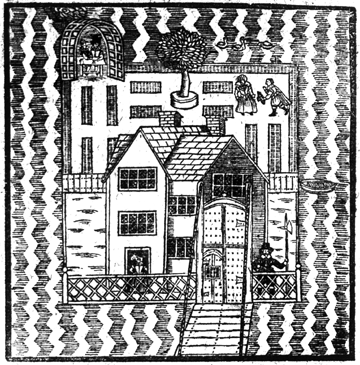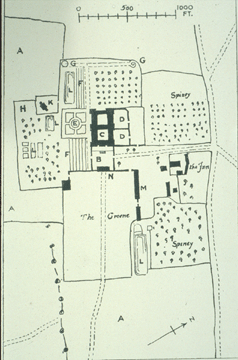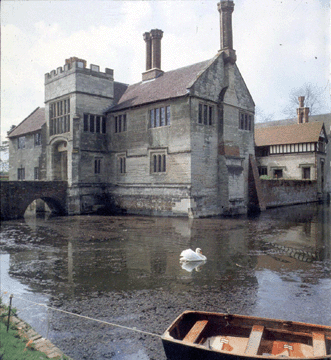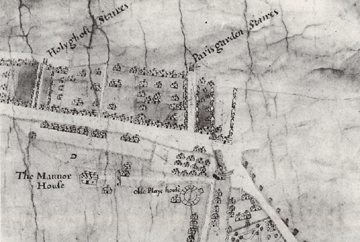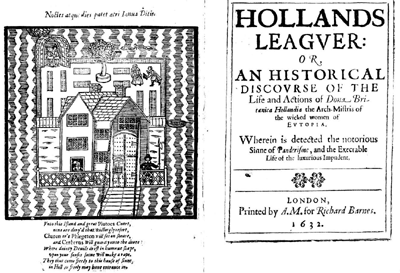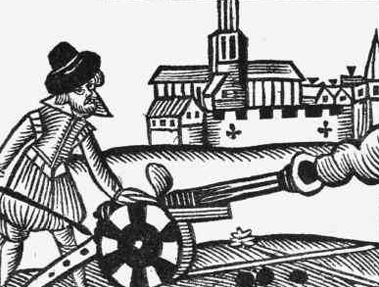
1. This essay explores one way in which the aristocracy inhabited the unsettled -- at times even vagrant -- physical, mental, and representational spaces of the lower orders of seventeenth century England. My vehicle is the lowly street literature of the period: black-letter broadside ballads. While ballads were bought and even appreciated by the middling and upper sorts, they were primarily the poor man's music, literature, and art. The low cost of broadside ballads ("somewhere between a halfpenny and a penny, with room for haggling and concessions," estimates Tessa Watt) made them available to the poor, if not to the indigent.1 Even those who could not afford to buy ballads could still hear them sung -- and those living in London often would hear them, willy-nilly, since ballads were belted out on street corners as well as in most secular public spaces (alehouses, markets, and the like). The features of the ballad also targeted the low: easy-to-learn popular tunes; a smorgasbord of popular topics (romance, marriage, sex, news, wonders, etc.); and pretty decorations (swirling black-letter print as well as multiple, if simple, woodcuts). Indeed, for the semi-literate, black-letter broadside ballads might well have been perceived primarily as ornaments. Certainly, they were pasted up as decorations on the walls of lowly homes -- the poor man's oil painting, if you will.
2. But as I argue in my recent book, Unsettled, "home" for the poor was an unstable space, subject to economic, psychological, and even physical displacement as householders and their spouses held multiple jobs or by-employments, or moved from job to job, or even from place to place in an effort to "get by." Broadside street ballads, I also argue in this book and elsewhere, were themselves mobile and makeshift forms: hawked on the streets alongside fruit and other perishables -- often by the poor or otherwise unemployed; made of flimsy, quickly degradable paper, sometimes printed upon the back of previous printings or recycled as pie lining, kindling, etc.; and decorated with interchangeable woodcuts and tunes, which shifted unpredictably from broadsheet to broadsheet. Broadside ballads, I have argued, embody "an aesthetics of vagrancy" or, more expansively, "an aesthetics of unsettledness" -- of not being "at home" -- even as they were temporarily pasted up or "fixed" on the walls of a poor man or woman's home. Such an unsettled aesthetics could best speak to and represent the unstable poor.2
3. So what has any of this got to do with the aristocracy? Not much, it might seem, if I am to hold to the tenets of my first monograph, Cultural Aesthetics. In this book I traced what I termed the "trivial" social practices of the upper sorts (defined as gentry and above), and found a subject dependent for definition on place -- not only on social but also on physical place. In other words, the "discovery" of aristocratic subjectivity (whether in a sonnet, a miniature painting, the perspective scenery of a masque, or an architectural site) required the physical layering of the self (through screens of conventional rhetoric, ornament, rooms, or other such situated spaces) so that the self could be felt to be penetrated into and experienced as "interior" and singular. The lower class subject, on the contrary, as I argue in Unsettled, had no access to such a discovery. It was without privileged place. Its subjectivity could not thus be experienced as interior and singular but only as dispersed and multiple. This is why the ballad's aesthetics of unsettledness, enacting as it does displacement, so tellingly speaks to the low.
4. And yet, one might counter (and I realize here I am countering my own self), there was an uncanny likeness in the early modern period between high and low, perhaps even more so than between middle and low. For, as I have further argued in my study of aristocratic subjectivity, any notion of an attained or singular "I" in the period is illusional. Interior spaces, I found, continually fragmented and multiplied -- private rooms, for instance, were further subdivided or, like the banqueting house, broken apart from the whole -- suggesting a perpetual fracturing, deferral, and unattainability or unknowability of the aristocratic self. In this sense, then, the dispersed identity experienced by the lower class subject might be understood as an alter-mapping of an aristocratic interiority endlessly deferred (however much the aristocracy sought to find itself within place).
5. That an especially intense, if perverse, affinity in fact linked the low and the high can be seen in the aristocracy's intimate and extensive involvement in the new fluid economy of late sixteenth- and early seventeenth-century England.3 A craftsman might lose or let go several apprentices in the course of his career, but a gentleman or noble might produce unmoored labor on a grand scale: by releasing large numbers of servants and retainers, as part of the move toward household privatization and economizing; by hiring wage laborers in their stead, who then had the uncertain task of providing their own lodging and food; by rack-renting and enclosing common lands, thus displacing tenants and forcing alternative and often makeshift means of livelihood; by increasingly in the seventeenth century setting up their sons as urban merchants and tradesmen, thus driving poorer apprentices into the itinerant ranks of journeymen or wage laborers; and, perhaps most significantly, by backing projects and monopolies that exploited the poor, often in the guise of putting them to work in new domestic trades. The most notorious of the last mentioned projects may have been the scheme implemented in 1602 by Thomas Stanley, "gentleman," and three others, who contracted to take over the charge of Bridewell for £300 a year on the promise of putting 500 vagrants to work. In fact, the governors never employed more than 100 such vagrants because their own labors were engaged in profiting on the space of vagrancy in a more originary sense. Bridewell, at their hands, became not an efficient workhouse in new domestic trades but a profligate (if also profitable) house of prostitution and an alehouse.4
6. If the upper sorts effectively contributed to the production of unsettled, even vagrant, labor, furthermore, they also actively sustained it: within the country, as eager consumers of the diverse goods trekked in by itinerant peddlers and chapmen, whose mobility made them liable to arrest for vagrancy; and within London, as prime frequenters of an expanding entertainment industry (bowling, theater, bear-baiting, prostitution, etc.) associated by the authorities with dangerously loose "idleness" -- a term often synonymous with vagrancy in the period -- and mostly situated in the suburbs or liberties of London.5 Finally, many upper class youths in London were finding themselves quite literally unemployed in the late sixteenth and early seventeenth centuries, as Lawrence Stone has shown.6 Of course, being "idle" in the sense of not laboring physically for a living was traditionally a point of pride for the upper sorts. But many now found themselves inopportunely so. Gentry and noble youths had industriously flocked to the universities and Inns of Court in the hope of thereby securing respectable advancement in the Church or State, and found the doors often closed. Numbers quite simply exceeded demand. Many an upper class youth in London thus had more than enough time for "vagrant" entertainment.
7. The lowly broadside street ballad cunningly capitalized on this potential for the aristocracy itself to be perceived of as unsettled, even in some ways, vagrant. Woodcuts of aristocratic figures were the most popular decoration of broadside ballads, as exemplified in Figures 1 and 2):
|
|
Its images pasted up on tenement and cottage walls, the aristocracy thus shared the unstable "home" space of the poor. In more striking and biting ways as well, the street ballad imagined a tie between the aristocracy and "low" unsettledness -- to the point of translating the one into the other. The greedy landlord, in "A Lantern for Landlords" (Pepys 1.146-147), who evicts a poor widow and her newborn twins after her husband dies in the lord's service, is in punishment "brought to beggary," and his entire family executed for horrendous crimes. He fittingly dies "low," in the gutter of the street: "Within a channel [he] drowned himself / that down the street it ran." In another, more tongue-in-cheek ballad, "A Pleasant New Ballad to Sing both Even and Morn, Of the Bloody Murder of Sir John Barley-Corn" (Pepys 1.426), the aristocracy takes the form of the much desired barley that is violently murdered and beaten down by laborers in the elaborate process of making ale. In this case, though, Sir John gets his revenge by in turn bringing all his drinkers low: "some lay sleeping by the way," "some tumbling in the mire," "Some lay groaning by the walls, / some in the streets down right."
8. Both the above mentioned ballads for a time unsettle the upper sorts and make them akin to the unstable "low." But a popular ballad that even more extensively and vividly depicts such a tie between the upper and lower sorts -- that spatially disperses aristocratic interiority through a fluid money market in which the street ballad participated -- is the anonymous broadside ballad in the Roxburghe collection, 1.252-253, titled "Mock Beggar Hall," printed c. 1633 for Richard Harper (Figure 3).7
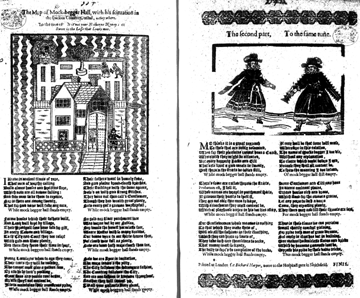
|
A look at the text of this ballad and its accompanying woodcuts illustrates the aristocracy's involvement in the ballad's lowly aesthetics of unsettledness as well as the way itinerant woodcuts could tellingly "strike home."
9. In "Mock Beggar Hall," the poet laments the aristocracy's neglect of traditional places of charity, whether "alms houses and Spittals [hospitals]," or, more importantly, its country homes. Instead of inhabiting a situated place of generosity, we are told, the new breed of aristocratic youths invests in economic, social, and geographic mobility. Procuring liquid capital through rack-renting and selling off of farmhouses and land, these roving youths resort to the city and court, where "they spend their time in sport," frequenting the theater, following extravagant urban fashions to the point of insolvency, and rattling "through the streets" of London in their new coaches (for many, their lone remaining possession). The country home, as the title suggests, thus becomes a "spacious" "anywhere" that is nowhere because it no longer really IS. It is no longer a country seat but an empty similitude or mockery of such a hall, as the variations upon the refrain to the ballad repeatedly intone: "While mock beggar hall stands empty."
10. This refrain refers to the fact that the aristocratic country seat, or hall, which is now "empty," mocks the beggars who approach it seeking relief:
Let any poor to such a door
Come, they expecting plenty,
They there may ask till their throats are sore,
For mock beggar hall stands empty.
But, of course, the empty hall also mocks the aristocracy for its cruel lack of traditional hospitality.
11. More generally, the empty hall mocks upper class "place," both geographical and social, which has now become hollow and insubstantial. That is, the pursuit of mobility -- liquid cash, changeable fashion, rambling coaches, and the like -- has rendered any such notion of "place" meaningless. The new upper class subject has no place. It is a spacious, itinerant, and exchangeable "I." Indeed, "home" for some, the poet declares, is now but the thin outer skin of parchment on which they have mortgaged their estates, a most infirm housing or "wrapping" of their transient identities:
There's some are rattled through the streets,
Probatum est, I tell it,
Whose names are wrapped in parchment sheets,
It grieves their hearts to spell it.
12. In thus releasing/subjecting itself to the unsettled processes of a new money market (including not only the selling of estates but the extensive buying up of titles), the new upper class subject, finally, has become metaphorically and literally self-beggaring:
. . . every beggarly Jack and Gill
That eat scant a good meal in twenty,
Must through the streets be jolted still,
While mock beggar hall stands empty.
13. The two woodcuts heading the two parts of this ballad picture the new aristocratic subject so beggarly dissipated. We need to spend some time with these woodcuts, as contemporaries would have done. A ballad's accompanying pictures held equal (if not superior) status with its text, especially for those among the lower orders who were illiterate or barely literate. Of course, we should not make too much of the deliberate fit between illustration and poem. Woodcuts for ballads were rarely tailor-made because of the demand for cheap production to keep costs low.8 Usually the woodcuts would be selected from the assortment of used blocks that the printer had bought up en masse at bargain costs. And such worn woodcuts were often reused again -- as we will see in the case of the illustrations considered below. Nevertheless, as we shall also see, even in the case of reused woodcuts, the illustrations could be carefully selected and tellingly play off against the text they served to visualize.
14. We might begin with the second of the two woodcuts prefacing the second part of the ballad, which supports the text's vision of changeable or unsettled aristocratic fashion (Figure 4):
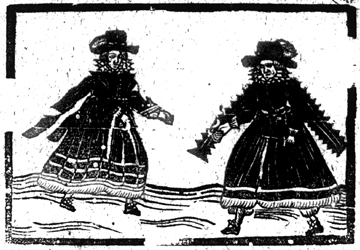 |
Imaged in this very worn woodcut are two figures who encounter each other "on the streets" dressed extravagantly alike in the current urban vogue that the poet deplores in the poem: they are done up in "ruffs with so many doubles" made of wasteful bands of cloth. "Now one band hath more cloth than ten," the poet bemoans. The extended sleeves, which hang down luxuriously at their backs, demonstrate sartorial prodigality.
15. These excessively banded figures are likely well-to-do women. Flowing robes were not worn by men other than the clergy at this time and dangling sleeves were a female fashion introduced into England from France along with the farthingale in the 1580s.9 They can be seen being sported on the dress of the woman in the second woodcut to Figure 1, which repeats in Figure 2. If the banded "Mock Beggar Hall" persons in Figure 4 are women, however, they are transgressive in unsettling gender as well as clothing norms. Two additional fashion statements make this clear: the feathers in their hats and their swords (a dagger can be barely detected in the left hand of the woman on the right and the woman facing her holds, or rather at one time held, a sword, now mostly broken off from the woodcut but the traces of which can be seen crossing her left wrist). Both feather in hat and sword specifically recall the exorbitantly mannish women portrayed in the Hic Mulier and Haec Vir and other anti-feminist debate tracts of the early seventeenth century. Making the same association, it would seem, the printer of another ballad, "The Sailor and his Love," c. 1625 (Figure 5), places our "Mock Beggar Hall" woodcut beside the right half of a woodcut that is broken or split off from its left part and which in its entirety served to illustrate the title-page to Hic Mulier; Or, the Man-Woman (London, 1620) in Figure 6:
|
|
Though the "Mock Beggar Hall" woodcut of Figure 4 may image unsettled and unsettling gender as well as fashion, however, the portrayal of wasteful dress in the text of the ballad is not so gendered. Female and male alike, the poem declares, indulge in a dislocating excessive fashion.
16. Further supportive of the image of aristocratic dissipation as described in the text of the ballad is the fact that the fashionable figures in the woodcut are divided. To be more specific: the illustration translates the self into multiplied Others. The two figures are near twins in their facial features and dress, and each faces the other as if looking into a mirror (which the woman from the Hic Mulier title-page in Figures 5 and 6 in fact does). But the women in Figure 4 are not simpatico. There is an aggressiveness to their legs-apart stance, their clenched fists, and, of course, the pointed dagger that one holds in threatening complement to the other's grasped sword. We might see this aggressiveness once again as imaging the transgressive female in the sense that her exorbitant fashion turns her into a mannish woman. Alternatively, since the text of the ballad is not gender specific, the viewer might think the woodcut more generally pictures the competitiveness of the market in newfangled vestments. And a third possibility also comes to mind, which is especially telling for our study: such mirrored aggression portrays a fractured and self-divided identity produced by in-vest-ing so heavily in such a competitive economy of displacement.
17. If this second woodcut complements the poetic vision of economically dispersed subjectivity, the first woodcut, which opens the ballad, would appear to contradict it. Illustrated here, we naturally assume, is a typical country house made "mock beggar hall" (Figure 7):
|
Figure 7. Close-up of first woodcut to "The Map of Mock-begger Hall" (Figure 3) |
Certainly, the survey of Holdenby House in 1587 (Figure 8) shows a similar layout of house and gardens, and even includes a similar private banqueting house or arbor at the very back of the larger gardens (the house is "C" on the plan; the banqueting house was raised on one of the mounts marked as "G," probably the one accessed via the Terrace, "F"). And the case of Baddesley Clinton, in Warwickshire, shows how some such country homes, like the house imaged in the ballad, could also be moated (and also equipped with a small boat for selective transport across the water) (Figure 9).
|
Figure 9. Baddesley Clinton, Warwickshire. |
But, oddly, though our "mock beggar" hall in Figure 7 would thus seem a typical country seat, it is not at all, as the ballad laments, typically "empty," despite the repeated insistence in the poem's refrain that "mock beggar hall stands empty." Six human figures appear in the picture (though the pairs at the back are probably the same couple being shown in different locations and times). Rather than an empty space, the hall is an extremely isolated, closed-off, and private -- that is, only selectively permeable -- place. Indeed, it consists of successive enclosures that, on visual penetration, enact not aristocratic dispersal but aristocratic interiority, most definitively placed.
18. The first enclosure is the wide moat that impressively surrounds the estate. The hall within is then further shut off by an imposing, iron-studded door, with blackened window, and a vigilant, armed guard. That frontal closure is re-imaged in the back of the house by yet another wall, behind which are the enclosed gardens where lovers woo. Finally, at the very rear of the grounds, the intimate lovers (and our eyes) retire to a screened banqueting arbor of the kind I have described in my study of aristocratic private retreats in Cultural Aesthetics (one such arbor is shown being constructed in the frontispiece to Thomas Hill's Gardener's Labyrinth, 1594, in Figure 10):
|
Certainly, access to the succession of closed-off spaces in Mock Beggar Hall in Figure 7 is possible (other than merely through our penetrating gaze). The lady standing at the threshold of the doorway in the front of the house looks out to us, acknowledging our presence; the drawbridge is down; and one -- if only one -- might even sneak into the inner gardens by means of the little bobble of a boat pictured hard by the garden wall on the right. But such access is guarded and select, as moat, gate, guard, wall, and dinghy make clear. Definitively shut out are the hordes of an undistinguishable and unprivileged and unplaced public: specifically, the poor.
19. The hall thus, indeed, stands in mockery of beggars as well as of aristocratic hospitality on a public scale. But perhaps the greatest mockery of Mock Beggar Hall is the fact that the image appears elsewhere about the same time as a picture of a famous London whorehouse, Holland's Leaguer, located in the bankside liberty of Paris Garden. The brothel originated as an aristocratic manor house, prominent enough to be indicated on Thomas Aldwell's 1627 survey of Paris Garden (Figure 11):
|
This map clearly shows the Manor House standing nearby another prominent idle delight of the southbank, the Swan theater (indicated on the map as "Olde Playe house"), one of the many theaters at which the dissipated youths of the ballad are said to waste their time, with their coachmen idling asleep outside. In earlier and later maps of the area, the manor can be seen in more detail with its expansive gardens and moat (for example, Figure 12):
|
But by the 1630s it had become infamous as Holland's Leaguer.
20. The brothel of Holland's Leaguer (leased and managed by Elizabeth Holland) was all the news between December 1631 and May 1632, and indeed from about mid-December until mid-January it was under siege by the authorities and tenaciously defended by its inhabitants. Feeding demand for accounts of the onslaught and its outcome, no less than three texts -- all titled "Holland's Leaguer" -- were entered into the Stationers' Register during these months: a play by Shakerley Marmion, a ballad by Lawrence Price, and a pamphlet by Nicholas Goodman, for which our "Mock Beggar Hall" woodcut services as frontispiece (Figure 13):
|
"Each of these texts," Natasha Korda observes, "is structured by a narrative of penetration that describes, with sexualized urgency, the storming of Holland's fortress-like brothel."13
21. We may here begin to see a truly intimate connection between aristocratic interiority or privacy as imaged in the woodcut of Mock Beggar Hall (Figure 7), on the one hand, and unsettled subjectivity as suggested in the multiple "I's" and fashionable gender dislocation in the second illustration (Figure 4) and as projected in the form of economic dispersion in the narrative of the ballad, on the other. Prostitution, while a crime in its own right, was associated with unsettledness in its lowest form -- vagrancy -- because it was considered an act of "idleness" not work and because it was a common trade of female vagrants (who tended to be convicted of prostitution rather than vagrancy, though they were sent to Bridewell along with their male counterparts -- the fate endured at one point by the minions of Elizabeth Holland in Goodman's pamphlet).14 Indeed, many prostitutes would have practiced their "trade" in Bridewell during the time the workhouse itself temporarily became a whorehouse under the governance of Stanley. In an obvious way, the upper and well-to-do middling sorts were involved in London prostitution: they not only frequented stews but sometimes also, like Stanley or Lord Hunsdon, the Queen's own cousin -- who once owned the manor house that became Holland's Leaguer -- profited as governors or landlords of such establishments.15
22. More significantly for the ballad at hand, however, is the connection an intensely vagrant act such as prostitution offers between the apparently contradictory picture and poem of "mock beggar hall." The first picture (Figure 7), we have seen, images aristocratic inwardness or placed privacy in its successive circles of closure (moat, gate, guard, wall, arbor), which determinedly shut out the poor public. The text of the poem, on the other hand, converts that enclosure into "low" dispersal as upper class youths sell off their lands and beggar themselves in the transient delights of London (money, fashion, theater, coaches). Prostitution, I would argue, is the mediating term between these two different forms of identity that translates the one into the other. Prostitution, that is, transforms the selective openness imaged in the picture of aristocratic privacy -- the lowered bridge, the lady gazing at us, the transgressive dinghy -- into an act of profitable penetration. The lady acknowledging our presence now becomes a bawd inviting self-interested, marketable exchange. In the process, the picture's privileged interiority becomes intimately entwined in the poem's destabilizing market economy, and aristocratic privacy emerges as unsettled subjectivity and decidedly "low." Since the second woodcut (Figure 4) supports and extends the text of the poem, imaging a "street aristocracy" of both aberrant fashion and gender -- in which "high" women sport the aggressiveness of the manly whores of Holland's Leaguer who stoutly defended their hall -- even the illiterate familiar with the news, who might only focus on the illustrations of this ballad, might have seen this translation.
23. What are we to make of this ballad's imaginative translation of aristocratic identity into the multiply "low" and "unsettled"? To begin with, and to return where I began, it confirms that the lower-order poor, sitting and gazing upon such a ballad pasted up on their walls, recognized unsettledness in aristocratic "place" as well in their own unstable homes. By "recognized" I do not mean "literally identified." Rather, the poor might have imagined such a destabilized identity metaphorically or, perhaps more accurately, metonymically. After all, most of the upper sorts were far from actually joining the ranks of the displaced laboring or vagrant poor. Most still enjoyed comfortable homes into which they could retire (and retire, and retire), and the lower orders knew it. But they also knew that the upper sorts were heavily invested in the new fluid money market and may even have personally suffered for such "high" interests. Furthermore, and most simply, each would have run into the other "rattling" through the streets. While the low were the most physically as well as economically mobile class, middling and high sorts were also often compelled by economics repeatedly to traverse the urban and rural byways that networked early modern England. By virtue of their social prominence, the upper sorts were especially visible on the roads, shuttling back and forth between their country estates and city residences, and within London, bustling between home, business, and "idle" entertainments.
24. This might well explain why lowly works such as ballads and pamphlets privilege images of the "high" -- in pamphlets, consider especially the cony-catching works of Robert Greene and Thomas Dekker, in which "gentlemen" knaves play a significant role. The high so imaged, one might say, are the most prominent aesthetic manifestation of unsettledness and vagrancy. They are also the most respectable. In the aesthetics of the broadside street ballad, the upper sorts might well have been imagined by the ballads' creators and their lowly audience not only as making visible and comprehensible but also as making acceptable an officially unrecognized, because mobile, laboring poor (who are but abstract ciphers, for instance, in "Mock Beggar Hall").16 This is another way of understanding the recurrence of images of upper sorts in the woodcuts of ballads; they are not so much wish-fulfillment Others as prettified kin of the unsettled and unsettling "low."
25. Finally, we may go so far as to conjecture that the upper sorts, who also eagerly purchased such popular ballads as that discussed above -- though they claimed to scorn them -- would be capable of recognizing themselves, however momentarily or fracturally, as "mock beggars." Such insights might be most pressingly experienced by a gentleman or noble upon hearing the above ballad sung, or seeing it posted up on a wall, while himself in the act of haunting the suburbs, or loitering up and down the aisles of Paul's, Westminster, or the Exchange, or rambling through the streets of London, or simply hanging idly about court looking for opportunities. There was a seminal trace, one might say, of unsettled placelessness in the practices of the "placed" upper orders that could be at any moment germinated. And the composers and viewers of broadside street ballads knew it. Such is the expansive scope of the ballad's unsettled aesthetics pasted up on the poor man's walls.
| Go to Craig Dionne's response. |
| Go to this issue's index. |
(Spelling and punctuation of titles and quotations are modernized and Americanized in the body of my text, for easier reading, but titles are preserved in the original spelling and for the most part in the original punctuation in the notes, for easier locating in archives.)
1 Tessa Watt, Cheap Print and Popular Piety, 1550-1640 (Cambridge, UK: Cambridge University Press, 1991), 12. Hyder E. Rollins puts the price of a broadside ballad at a penny but says it dropped by the end of the seventeenth century to a half penny; "The Black-Letter Broadside Ballad," PMLA 34 (1919): 296, 304. William St. Clair has recently argued that the pricing moved in the reverse direction, though his evidence is sketchy; The Reading Nation in the Romantic Period (Cambridge, UK: Cambridge University Press, 2004), 63, 511. Either way, the broadside ballad was without doubt the cheapest form of print in the English Renaissance and thus the most affordable to the poor. I should add that "poor" is an open and expansive category, embracing as much as 50% of the population of mid-seventeenth century England; on defining the poor and on the poor as a newly targeted audience of seventeenth-century broadside ballads, see my Unsettled: The Culture of Mobility and the Working Poor in Early Modern England (Chicago: University of Chicago Press, 2006), 29-31 and 132-33.
2 The last chapter of Unsettled is specifically focused on the broadside ballad as an "aesthetics of unsettledness" aimed at the lowly poor; 130-52. See also my article, "Not Home: Alehouses, Ballads, and the Vagrant Husband in Early Modern England," in "Renaissance Materialities," ed. by Maureen Quilligan, a special issue of the Journal of Medieval and Early Modern Studies 32 (2002): 593-518, where I coin the term "an aesthetics of vagrancy" (592). As my ideas evolved in thinking about the mobile poor from early articles to the completed book, I increasingly saw the value of the term "unsettled" over "vagrant." The term "unsettled" is more expansive and less pejorative than "vagrant" and thus allows inclusion of those economically, psychologically, and/or geographically unstable lower orders who might be in various ways mobile but not necessarily legally vagrant (though the terms clearly blurred in the period). Forthcoming articles look at this aesthetics specifically in relation to early modern and modern practices of accessing and archiving broadsides ballads, and take as example woodcuts from the ballad I discuss at length below, "Mock Beggar Hall"; see my "Remembering by Dismembering: Databases, Archiving, and the Recollection of Seventeenth-Century Broadside Ballads," forthcoming in Early Modern Literary Studies (fall 2008) and also forthcoming, in a slightly different version, in Ballads and Broadsides in Britain, 1500-1800, ed. Patricia Fumerton and Anita Guerrini (Ashgate Press).
3 See my "London's Vagrant Economy: Making Space for 'Low' Subjectivity," in Material London circa 1600, ed. Lena Cowen Orlin (Philadelphia, PA: University of Pennsylvania Press, 2000), 206-25; expanded in Unsettled, 12-32, where I also opt for the more expansive term "unsettled" over "vagrant" economy (as well as "unsettled" over "vagrant" aesthetics) -- see note 2.
4 See William C. Carroll's full account of this scheme, in Fat King/Lean Beggar: Representations of Poverty in the Age of Shakespeare (Ithaca and London: Cornell University Press, 1996), 57-59.
5 On idleness as a form of vagrancy (and vice versa), see Carroll, Fat King/Lean Beggar, 4-7, 180-81.
6 Lawrence Stone, The Crisis of the Aristocracy, 1558-1641 (Oxford: Oxford University Press, 1965).
7 The British Book Trade Index or BBTI <http://www.bbti.bham.ac.uk/> dates the imprint used in this ballad as between 1634 and 1637. But Richard Harper, the printer, had completed his apprenticeship by 1633, and for reasons that shall become evident below, I believe he printed the ballad in that year or at least on the early side of the 1634-1637 range. It should be further noted that there is another, later version of this ballad printed by Harper in 1639-40, in Roxburghe Ballads, 3.218-219 (with the same tune, slightly different title and text, and completely different woodcuts). I discuss these two different editions and the circulation of the woodcuts from the first edition in my article, "Remembering by Dismembering."
8 Watt argues that the commissioning of woodcuts to fit the occasion of the ballad became more common in the early seventeenth century, especially for ballads about news events; Cheap Print, 148. But woodcuts continued to be recycled in large numbers throughout the period.
9 Thanks to Roze Hentschell for this information.
10 In the Holdenby survey, A = Park, B = Base-Court, C = 1st Court of House, D = Gardens, E = Rosery, F = Terraces, G = Mounts, one of which, probably the one on the left, is described as the likely site of a banqueting house, H = Site of Old House, I and L = Ponds, K = Church, M = Stables, N = Porter's Lodge); reproduced in J. Alfred Gotch, Early Renaissance Architecture in England (London, B. T. Batsford, 1901), 75, 76.
11 Reproduced in Survey of London, eds. Sir Howard Roberts and Walter Godfrey (London: London County Council, 1950), Plate 65, facing p. 94.
12 Reproduced online (sections D3 and D4) <http://mapoflondon.uvic.ca/section.php?id=D3#map_section> and <http://mapoflondon.uvic.ca/section.php?id=D4#map_section>.
13 The story of Elizabeth Holland is told by Dean Stanton Barnard, Jr., in the introduction to his edition of the pamphlet, Hollands Leaguer by Nicholas Goodman: A Critical Edition (The Hague: Mouton, 1970), 33-47. The comment by Professor Korda was made in written correspondence with me; I am grateful to her for allowing me to publish her insight.
14 Barnard, Hollands Leaguer, 69. Interestingly, though, Holland's character, Dana Britanica, is herself placed for a time in Newgate. On the susceptibility of women vagrants to prosecution for prostitution, see Robert B. Shoemaker, Prosecution and Punishment: Petty Crime and the Law in London and Rural Middlesex, c. 1660-1725 (Cambridge, UK: University of Cambridge Press, 1991), 185-86; 180, 212-13; see also Ian W. Archer, The Pursuit of Stability: Social Relations in Elizabethan London (Cambridge, UK: Cambridge University Press, 1991), 249-50, 253, 256, and Paul Slack, Poverty and Policy in Tudor and Stuart England (New York: Longman, 1988), 93-94.
15 On Lord Hunsdon's holding of the Paris manor house see, Barnard, Hollands Leaguer, 41. Hunsdon passed it on to Thomas Cure, the Queen's saddler, who next conveyed it in 1589 to Francis Langley, owner of the nearby Swan theater; Thomas Fairman Ordish, Early London Theaters: In the Fields (London, 1894), 249, 252. In 1602 it was purchased by Hugh Browker or Brooker and his son Thomas, who appear to have still owned the house at the time of the Holland incident; Barnard, Hollands Leaguer, 41-42.
16 On the invisibility of the unsettled and vagrant laboring poor, and how they are rendered visible by the middle class via fictions in rogue pamphlets about their donning disguises (versus representing the fact of their changing jobs), see my "Making Vagrancy (In)visible: The Economics of Disguise in Early Modern Rogue Pamphlets," in Rogues and Early Modern English Culture, ed. Craig Dionne and Steve Mentz (Ann Arbor, MI: University of Michigan Press, 2004), pp. 193-210; revised in Unsettled, 33-46. The Rogues edition offers many excellent essays that address the dependence of "placed" society on the very unsettled labor and economy it represented as criminal; see especially those essays by Craig Dionne, Linda Woodbridge, and Karen Helfand Bix.
